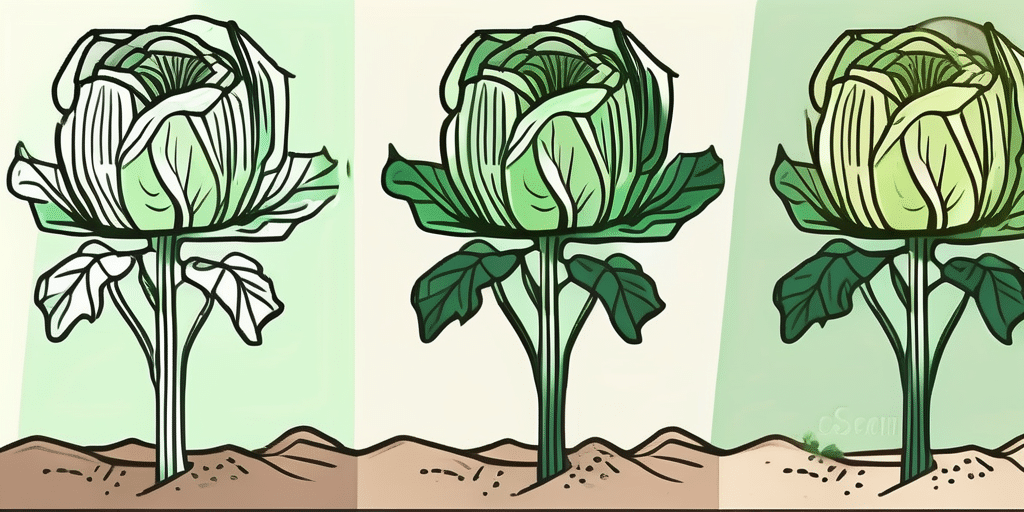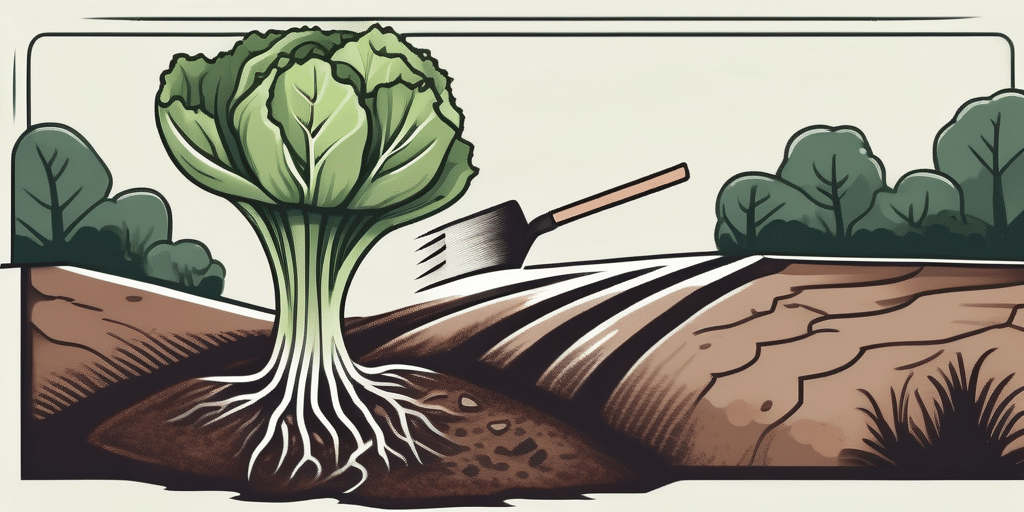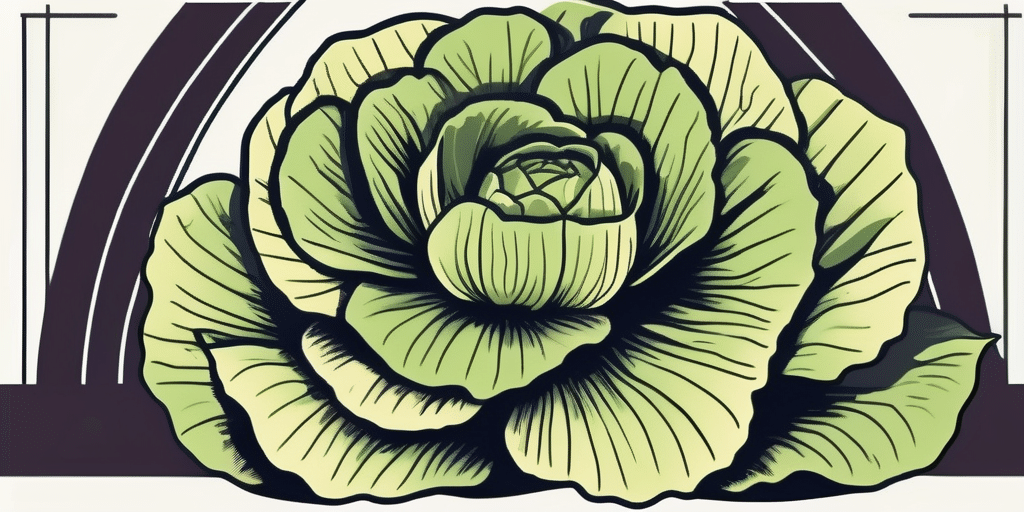Cabbage is a versatile vegetable that can thrive in a wide range of climates, including Zones 6a and 6b. If you are planning to grow cabbage in these zones, it’s important to know when to plant and how to grow it successfully. In this article, we’ll guide you through the process of growing cabbage in Zones 6a and 6b, from choosing the best varieties to harvesting your bountiful crop. Let’s get started!
Best Cabbage Varieties for Zones 6a and 6b
Before you start planting cabbage, it’s essential to select the right varieties that are well-suited to the climate of Zones 6a and 6b. Here are some of the top cabbage varieties recommended for these zones:
- Early Jersey Wakefield: This variety is known for its early maturity and compact size, making it ideal for smaller gardens.
- Golden Acre: A popular heirloom variety, Golden Acre produces round heads that are perfect for coleslaw or steaming.
- Savoy King: With its crinkled leaves and sweet flavor, Savoy King is a favorite among cabbage aficionados.
- Copenhagen Market: This variety is prized for its uniform, conical heads and resistance to cracking.
These cabbages are all well-suited to the colder temperatures and shorter growing seasons of Zones 6a and 6b. Now that you have an idea of the varieties to look for, let’s move on to the next section.
Growing Cabbage in Zones 6a and 6b
Now that you have selected the cabbage varieties, it’s time to start growing them in your garden. Here’s a step-by-step guide to growing cabbage in Zones 6a and 6b:
- Start seeds indoors: About 6-8 weeks before the last expected frost date, sow cabbage seeds in seed trays or pots filled with a well-draining seed starting mix. Keep the seeds moist and warm (around 70°F) for proper germination.
- Transplant seedlings: Once the seedlings have developed a few true leaves, usually around 4-6 weeks after sowing, they can be moved to the garden. Choose a sunny spot with fertile soil that has been enriched with compost.
- Space plants properly: Cabbage plants should be spaced at least 12-18 inches apart to allow for their leafy growth. Rows should be spaced 18-24 inches apart.
- Provide adequate water: Cabbage plants require consistent moisture to grow properly. Aim to provide at least 1-1.5 inches of water per week, either through rainfall or supplemental irrigation.
- Fertilize regularly: Cabbages are heavy feeders and benefit from regular fertilization. Use a balanced fertilizer, following the manufacturer’s instructions for application rates.
- Protect from pests: Cabbages are susceptible to various pests, including aphids, cabbage loopers, and cabbage worms. Monitor your plants regularly and take appropriate measures, such as using row covers or organic pest control methods, to manage pest infestations.
- Harvest at the right time: Cabbage heads are usually ready to harvest when they have reached their full size and feel firm when gently squeezed. Cut the heads off at the base of the plant using a sharp knife.
By following these steps, you will be well on your way to growing healthy and delicious cabbage in Zones 6a and 6b. However, before you start planting, let’s take a closer look at the climate and hardiness of these zones.
Climate & Hardiness in Zones 6a and 6b
Zones 6a and 6b are characterized by cold winters and hot summers. The average annual minimum temperature in Zone 6a ranges from -10°F to -5°F (-23.3°C to -20.6°C), while in Zone 6b, it ranges from -5°F to 0°F (-20.6°C to -17.8°C). These temperatures can present challenges for growing cabbage, which prefers cool, moderate climates.
However, with proper care and attention, cabbage can still thrive in Zones 6a and 6b. Here are some tips to ensure the success of your cabbage crop in these zones:
- Start seeds indoors: By starting your cabbage seeds indoors, you can give your plants a head start before the last frost date. This will allow them to develop strong root systems and withstand the cold temperatures of early spring.
- Use row covers: Row covers can be used to protect young cabbage plants from frost and cold winds. Make sure to remove the covers as the weather warms up to prevent heat buildup.
- Choose cold-tolerant varieties: Select cabbage varieties that are known for their cold tolerance, as they will be better adapted to the colder temperatures of Zones 6a and 6b.
By taking these measures, you can increase the likelihood of a successful cabbage harvest in Zones 6a and 6b. Now that you have a better understanding of the climate and hardiness of these zones, let’s move on to the next section.
When to Plant Cabbage in Zones 6a and 6b
The timing of cabbage planting in Zones 6a and 6b is crucial for a successful crop. Cabbage is a cool-season vegetable that prefers to grow in temperatures between 60°F and 70°F (15.6°C and 21.1°C). Here are some guidelines for when to plant cabbage in these zones:
- Early spring planting: In Zones 6a and 6b, cabbage can be planted as early as March or April, depending on the last frost date. Start seeds indoors 6-8 weeks before the last frost date for transplanting outdoors.
- Late summer planting: To extend the cabbage harvest into the fall, you can also plant a second crop in late summer. Aim to plant these seedlings around 8-10 weeks before the first expected fall frost date.
By planting cabbage at the right time, you can ensure that your plants have optimal growing conditions and produce a bountiful harvest. However, knowing when to harvest your cabbage is equally important.
When to Harvest or Pick Cabbage in Zones 6a and 6b
Harvesting cabbage at the right time is crucial for both flavor and texture. In Zones 6a and 6b, cabbage heads are typically ready to harvest 70-100 days after planting, depending on the variety and growing conditions. Here are some signs that indicate it’s time to harvest your cabbage:
- Firm heads: Cabbages should feel firm when gently squeezed. If the heads are soft or mushy, they are not ready for harvest.
- Good size: Cabbage heads should have reached their full size. This will vary depending on the variety, so consult the seed packet or reference book for specific information.
- Avoid cracking: Harvest your cabbage before it cracks, as this can affect the quality of the head. Cracking is usually caused by inconsistency in watering or rapid growth.
To harvest cabbage, use a sharp knife to cut the head off at the base of the plant. Take care not to damage the surrounding leaves or the main stem. Once harvested, store your cabbage in a cool, dry place for best quality and flavor.
Frequently Asked Questions
Now that we have covered the essentials of growing cabbage in Zones 6a and 6b, let’s address some common questions that gardeners may have:
- Can cabbage tolerate frost?
- How do I prevent my cabbage from bolting?
- Can I grow cabbage in containers?
Cabbage is a cold-tolerant vegetable and can tolerate light frosts. However, prolonged exposure to freezing temperatures can damage the plants, so it’s best to protect them with row covers or harvest before the first hard frost.
Cabbage can bolt or go to seed prematurely in response to stressful conditions, such as high temperatures or insufficient water. To prevent bolting, make sure to provide consistent moisture and plant your cabbage at the appropriate time.
Yes, cabbage can be grown in containers as long as you choose the right-sized pot and provide the necessary growing conditions. Select a large container with good drainage and use a high-quality potting mix. Keep in mind that container-grown cabbages may require more frequent watering and fertilization compared to those grown in the ground.
Now that you have a better understanding of cabbage cultivation in Zones 6a and 6b, it’s time to put your knowledge into action. Get started on your cabbage-growing adventure and enjoy the delicious and nutritious harvest!
Join How to Grow Everything for More Gardening Success!
Ready to take your cabbage-growing journey to the next level? Subscribe for free to How to Grow Everything and learn how to build the garden of your dreams! Receive personalized gardening advice tailored to your specific zone, experience, and interests. Enjoy the best gardening tips, special offers, and insights delivered directly to your inbox—no spam, just valuable knowledge from our family to yours. With thousands of free articles at your fingertips, you’ll have everything you need to grow not just cabbage, but everything your green thumb desires. Subscribe now and transform your gardening experience!





